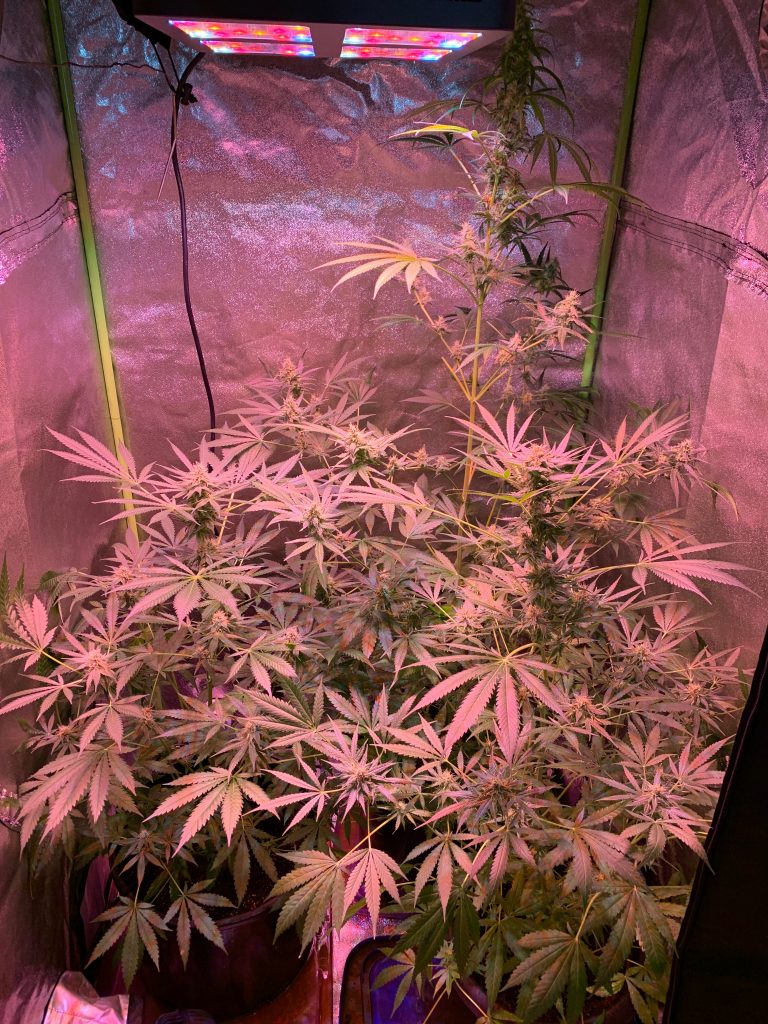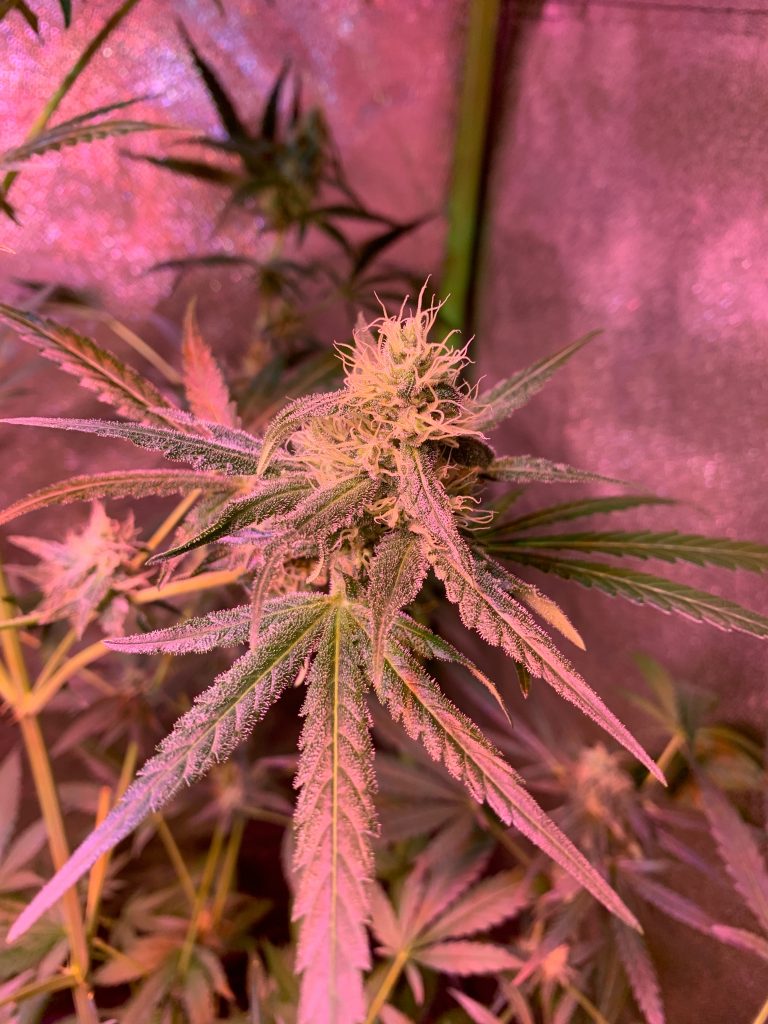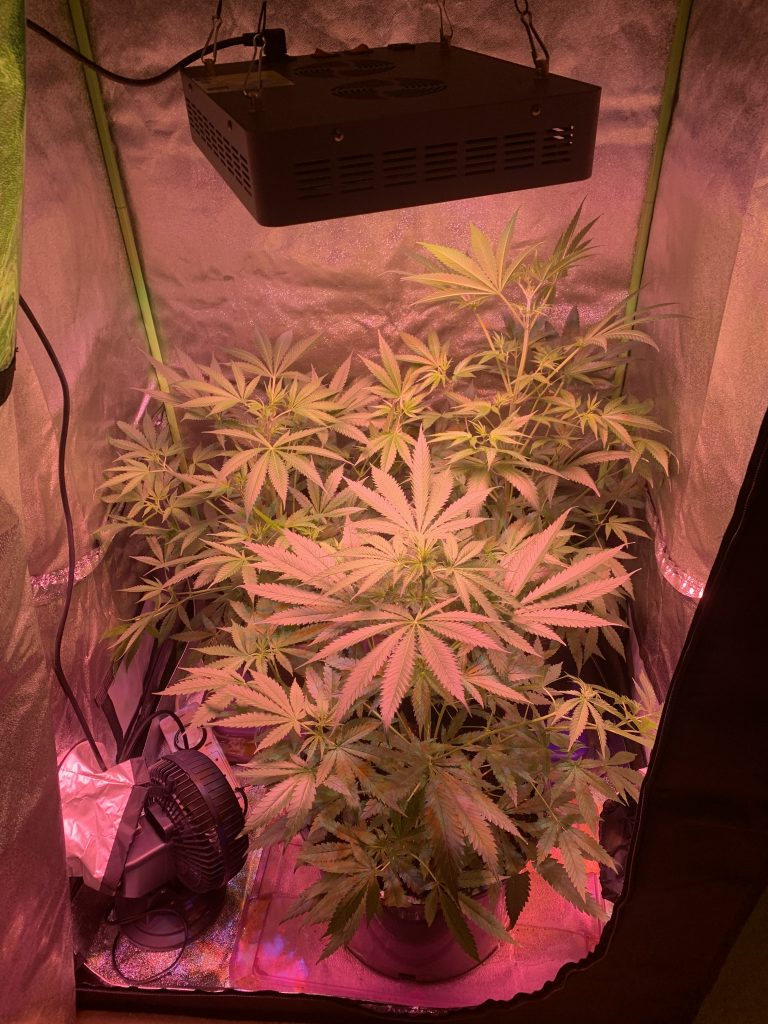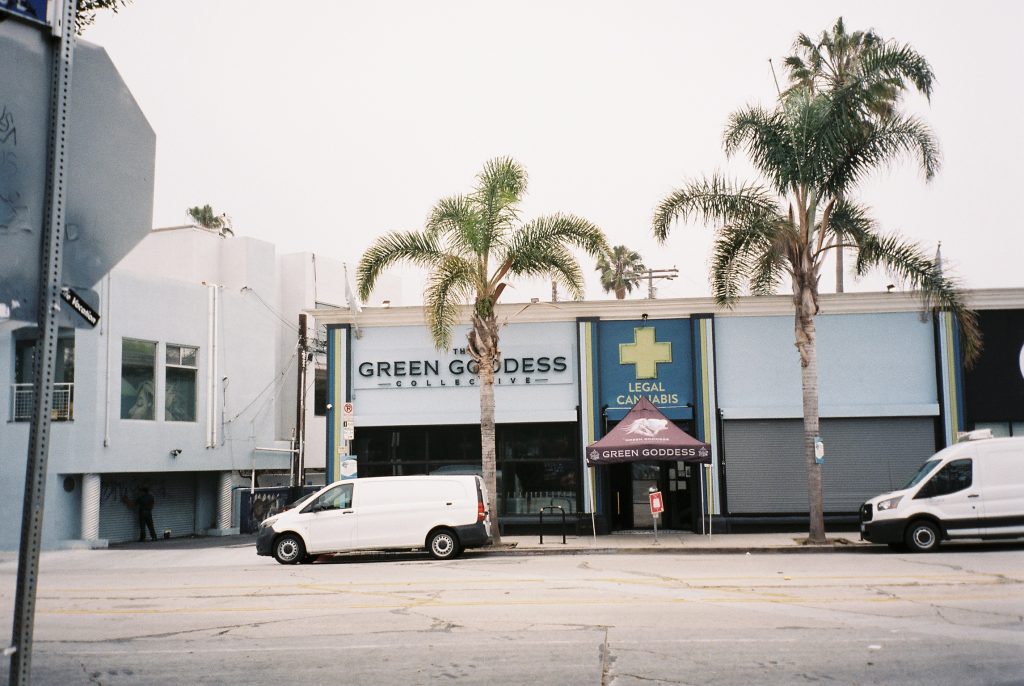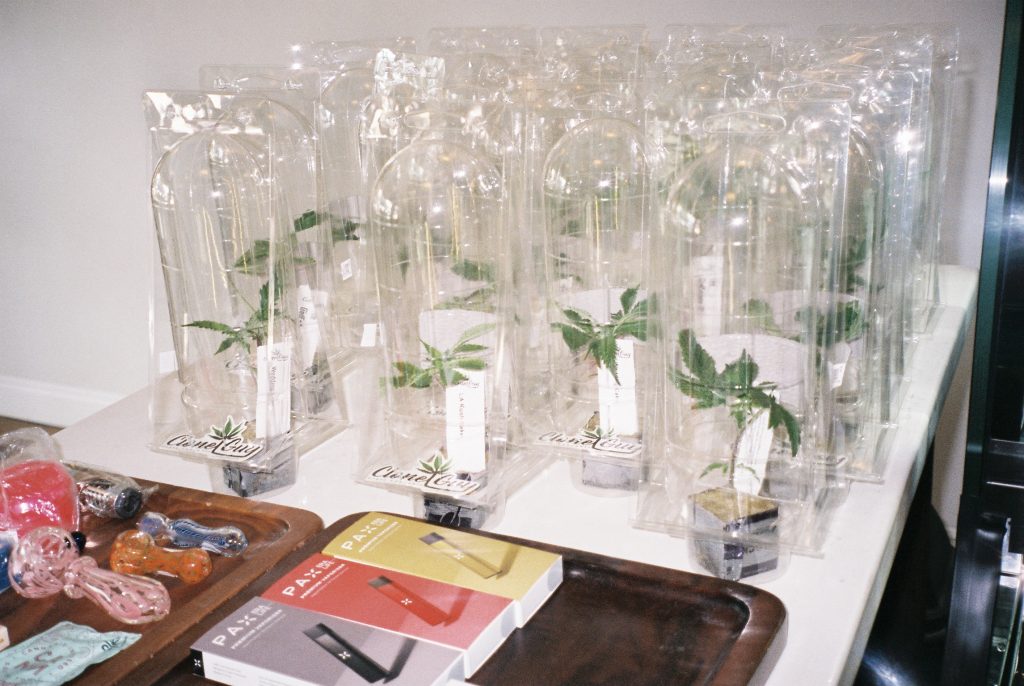If you ask somebody if they’ve consumed more cannabis during the COVID-19 pandemic, it is very possible that you will be met with a resounding affirmative response.
“I would say it’s increased,” said Peter Kasper, a second-year full-time MBA student at the Marshall School of Business at the University of Southern California. In addition to his studies, Kasper acts as the founder and outgoing president of the Marshall Cannabis Industry Club (MCIC), whose mission is dedicated to the education and destigmatization of the cannabis and hemp industries.
“I am home [all the time], specifically in this chair, around all my favorite distractions. So, it’s a little easier to consider lighting up as an option when it’s an option,” Kasper said. “When you’re at school, you’re hustling around all day, you may not have those opportunities” to smoke cannabis, Kasper said. “When you’re home, when you’re pretty much by yourself all day, it becomes a very accessible and easy outlet to invest your time into.”
In response to the WHO’s declaration of a global pandemic in March of 2020, people sought out different ways to deal with the stay-at-home orders, quarantine guidelines and general stress of the pandemic. Some practiced their sourdough starters. Others watched Tiger King (and insisted that Carole Baskin did it). In some households, a glass (or more) of wine did the trick. And according to researchers, quite a few Americans turned to cannabis as a means of coping with the “new normal.”

Clinical psychologist, Dr. Jody Helmus, says that’s, in part, because the pandemic is a form of trauma. According to Helmus, there are “Big T” and “Little T” traumas. “Big T” traumas tend to be isolated, higher frequency events. “Little T” traumas, on the other hand, are lower intensity events that happen over time, and are sometimes considered to be even more traumatic— like, for instance, a global pandemic.
“This has been a challenging time for everybody,” said Helmus. “There’s been loss across the board during this pandemic, all of us have lost something. . . This qualifies as a ‘little T’ trauma, at the least,” she added.
Helmus specializes in treating addiction, claiming those issues can be exacerbated by “underlying or untreated trauma.” She added, “We don’t have those other outlets to deal with depression, anxiety, anger. Most people that you talk to have been maybe drinking a bit more than they used to, and I’m guessing that the cannabis use and abuse has gone up exponentially this year.”
Dr. Helmus’s hypothesis appears to be correct.
Studies show that the very protocols used to fight the virus may encourage increased cannabis use among some individuals. Ordered to remain at home “except to go to an essential job or shop for essential needs,” some combated loneliness with the drug. In a 2020 study on self-isolation and usage, researchers at Dalhousie University found that those who abided by “recommended/mandated self-isolation were using 20 percent more cannabis than those who did not engage in self-isolation.”
“It’s a little easier to consider lighting up as an option when it’s an option.”
Peter Kasper
Researcher Sara Bartel of Dalhousie University, who assisted in conducting the study, hypothesized that those who self-isolated were more likely to use cannabis. “You can imagine that if you are someone who uses cannabis and you are self-isolating with limited social contact, this may result in increased cannabis use for several reasons,” Bartel said.
While cannabis may serve as a coping mechanism for some, Bartel says increased use can have repercussions. As mentioned in Bartel’s study, “increasing cannabis use levels in emerging adults are linked with poorer cognitive functioning, greater risk of cannabis-related problems, and increased risk of psychosis.”
“Increasing cannabis use levels in emerging adults are linked with poorer cognitive functioning, greater risk of cannabis-related problems, and increased risk of psychosis.“
Self-Isolation: A significant contributor to cannabis use during the COVID-19 pandemic
Cannabis use carries the risk of triggering or worsening some mental health problems, but it can reportedly help users cope with issues like anxiety. A 2017 study from the University of Washington’s Alcohol and Drug Abuse Institute surveyed more than 1,700 medical marijuana patients in California. Nearly 38 percent reported using medical marijuana to help with anxiety. Roughly 55 percent claimed medical marijuana contributed to their relaxation.
Although that work was done prior to the pandemic, other recent studies show a correlation between mental health and cannabis usage. The COVID-19 Cannabis Health Study done by researchers throughout the U.S., for example, found that those with mental health conditions were more likely to self-report an increase in use. In fact, respondents with mental health conditions reported a 97 percent increase in medicinal cannabis consumption during the pandemic.
While those with mental health conditions may use cannabis to alleviate stress and negative emotions in the absence of effective coping mechanisms, experts differ on the relationship between use of the drug and psychiatric conditions like anxiety and depression. However, the COVID-19 Cannabis Health Study reported, “Overuse of cannabis has been correlated with greater psychiatric symptomatology in anxiety, depression, post-traumatic stress syndrome and greater overall impairment.”

Source: The COVID-19 cannabis health study: Results from an epidemiologic assessment of adults who use cannabis for medicinal reasons in the United States
Increased consumption is not unique to the medicinal cannabis space. According to a study by New Frontier Data, a firm that specializes in insights regarding the global cannabis industry, 42 percent of cannabis users in the U.S. increased their consumption throughout the pandemic. Perhaps even more striking is the finding that nearly one in five people in the study reported a “large increase in consumption.”
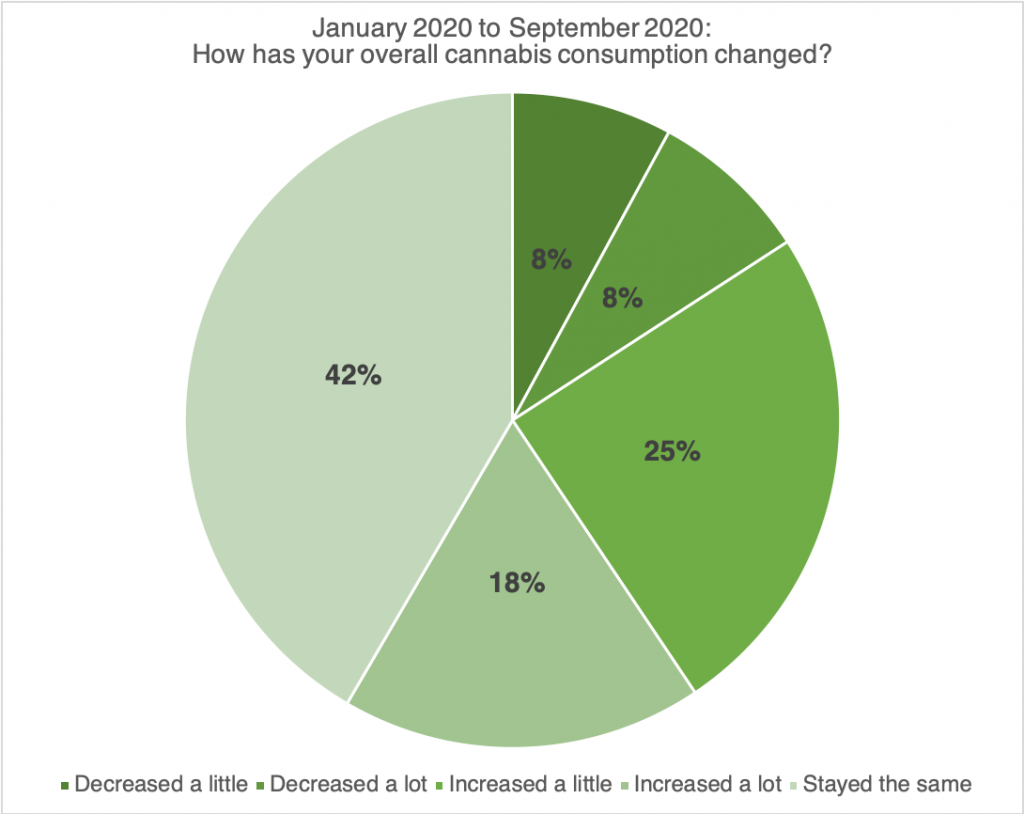
“I’d wake up, start off with a little bit of weed. I would work out, do yoga, grow my weed plants, go to work, do whatever I had to do to get through the day,” said Wesley Johnson, a second-year student at the University of Oregon.
Johnson, who is also an essential worker, admits to increasing her cannabis consumption throughout the pandemic. In the middle of her first year at the University of Oregon, the COVID-19 pandemic disrupted life as we know it. Like many American college students, Johnson left campus and quarantined in her hometown of San Diego, Calif. Employed at Home Depot during the summer of 2020, Johnson would mark the end of a long workday with cannabis.
Source: Wesley Johnson
“I feel like I was definitely smoking more weed,” Johnson said. “I took spring quarter off of school and so I was working 40 plus hours a week. It was physically tiring on my body. At the end of the night, I would unwind with a bowl or two, or a joint. I found that it definitely increased because it helped manage my stress a little bit better, especially with how much customer service I was doing,” she added.
The reported increase in consumption is also reflected in industry growth. According to online cannabis resource, Leafly, users spent more than $18 billion in 2020 alone— that’s roughly 70 percent more than the approximately $11 billion spent in 2019. By 2027, the industry is expected to grow at a Compound Annual Growth Rate (CAGR) of about 18 percent. The alcoholic beverage market, on the other hand, is expected to grow at a CAGR of only about 6 percent by 2025.
Recognizing the profit potential, USC student Kasper recently created a start-up called Terpli, an app dedicated to providing users with research and recommendations pertaining to cannabis products. His hope is to capitalize on the wider acceptance of the drug’s use due to the pandemic. As he seeks the means to grow Terpli, Kasper is currently discussing investment potential with stakeholders, which could now include his parents.
“What got my parents to start being comfortable with cannabis was the economics of it, the value they could get from an investment potential,” Kasper said.
Like many other essential businesses, the cannabis industry adopted safe delivery and pickup options due to COVID-19— and it paid off for companies like Dutchie, an e-commerce company that powers dispensaries’ online menus. Dutchie recently received a valuation of $1.7 billion after garnering $200 million during recent Series C funding. Just 7 months ago, it had only received $35 million in investments.
“You know the song by Peter Tosh? He talks about legalizing it. We want to normalize it,” said Ryan Dupuie, who has worked at Dutchie for nearly two years. “Because if we normalize it and it becomes a normal part of society like alcohol. Everybody wins,” said Dupuie.
Dutchie works with dispensaries to provide easy and safe access to cannabis products. Serving Canada and most states in the U.S., the demand for Dutchie’s services increased greatly during the COVID-19 pandemic. Among other factors, Dupuie believes that the pandemic played a role in Dutchie’s increased demand and in turn, the company’s greater valuation.
“Our order growth, our dispensary growth, our customer growth just went up. It was unbelievable, actually. The demand was crazy,” Dupuie said.
Green Goddess Collective, a dispensary client of Dutchie’s, is located in the heart of Venice Beach, California. The company’s location and clientele already lend themselves to strong cannabis sales. The newfound downtime associated with COVID-19 seemed to help, too.
“There’s definitely been more opportunities to smoke,” said Rachel Walker, a “budtender” at Green Goddess Collective, referring to increased cannabis use. Walker, who has worked at Green Goddess since 2018, said stay-at-home orders forced customers to take advantage of to-go options and deliveries, but sales still went way up.
The new demand has also drawn more people into the cannabis industry, but due to factors like convoluted laws and high taxes, cannabis production can be costly, resulting in a high-priced product. California native, Perry Garcia, initially noticed this as a college student at Cal Poly San Luis Obispo in 1984. After sharing a joint with a friend, Garcia asked how much it cost. When his friend informed him of the high price, Garcia said he responded, “We need to grow this stuff, man.”

Much has changed since the 1980s, but Garcia’s passion for cannabis remains strong. “I’ve always loved to grow flower,” Garcia said, referring to the drug’s cultivation. He says he always believed in the industry’s potential. Prior to the pandemic, Garcia worked at a car dealership where he saw sales fall as COVID hit. He also saw the demand for cannabis rise and decided in this strange time, “It’s a good idea to focus on the flower side of it.”
Increased accessibility to cannabis goes hand in hand with recent reform efforts. Mere days after the World Health Organization announced a global pandemic, state governments deemed cannabis dispensaries “essential” in roughly 30 states across the U.S. Policymakers also pushed for legalization in states like New Jersey, Vermont, Arizona, Montana and South Dakota. The 2020 presidential election was also seen as a step forward for legalization efforts.
“I think you could also point to the change in some things in Washington in terms of the president going blue,” said Dutchie’s Dupuie.
The status of federal legalization remains unclear, though. Senate Majority Leader Chuck Schumer and other senators are working to draft legislation and, according to Schumer, Americans will see the bill “soon.”
That’s good news for the nearly 70 percent of Americans who, according to recent surveys, believe cannabis use should be legal. That record-level of support shows people want it, and experts believe they are willing to pay for it, projecting legal sales could increase to $130 billion a year by 2024.

